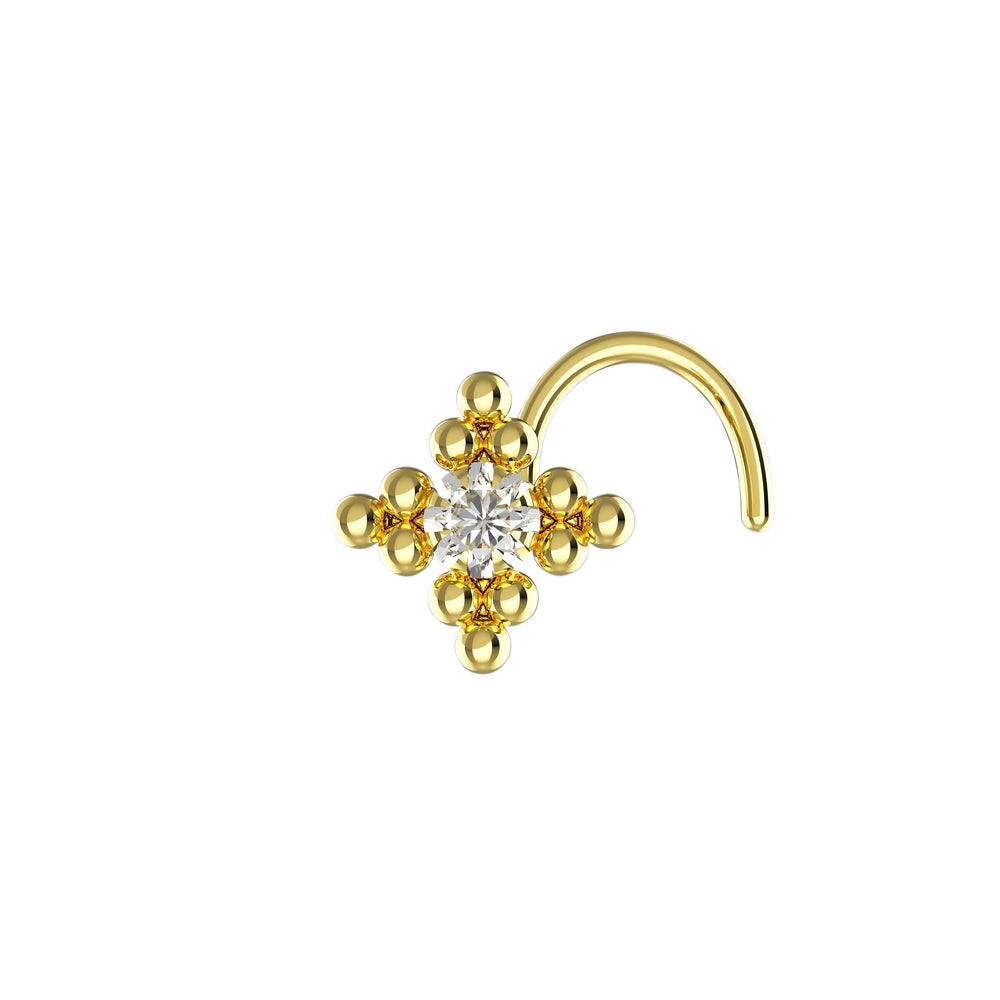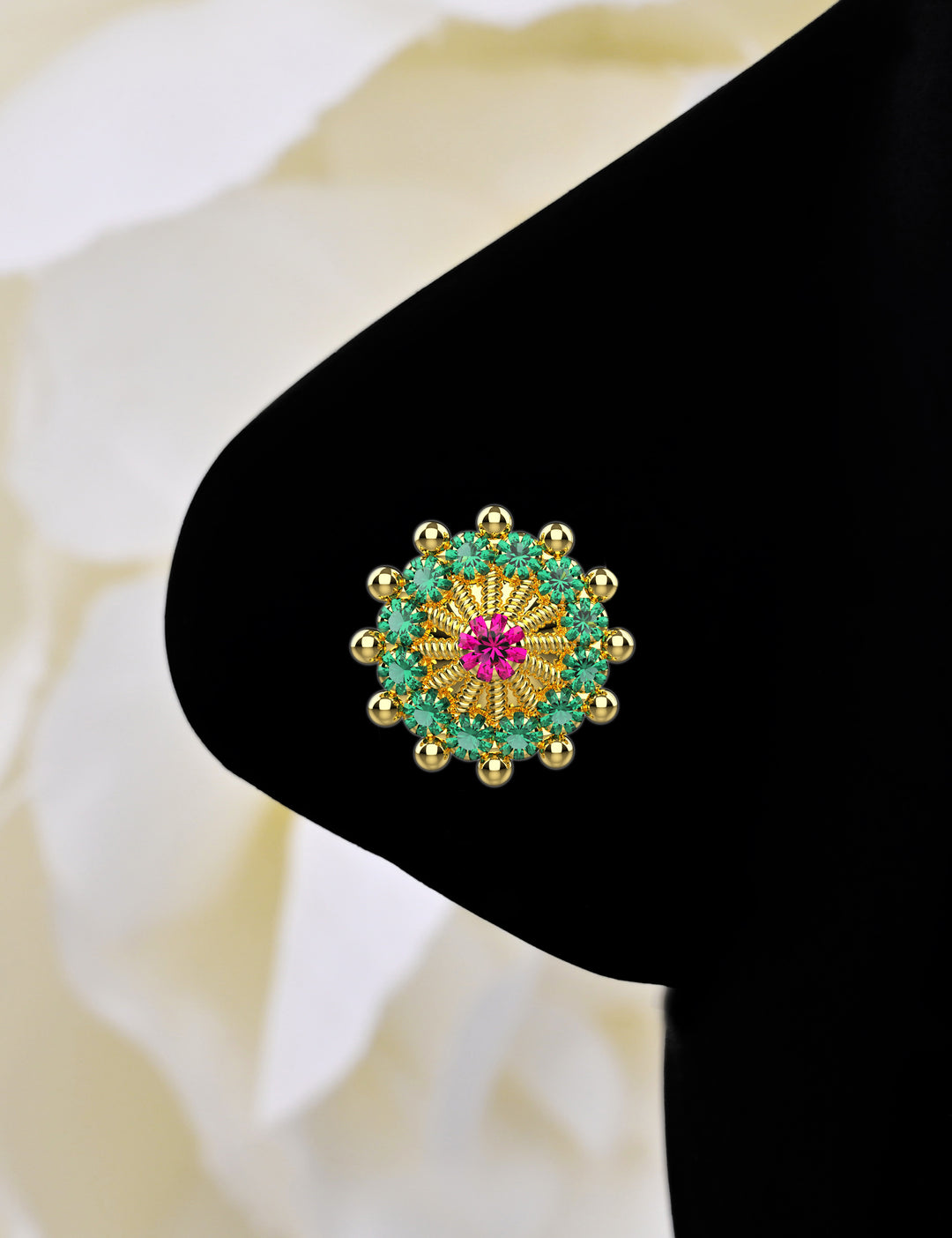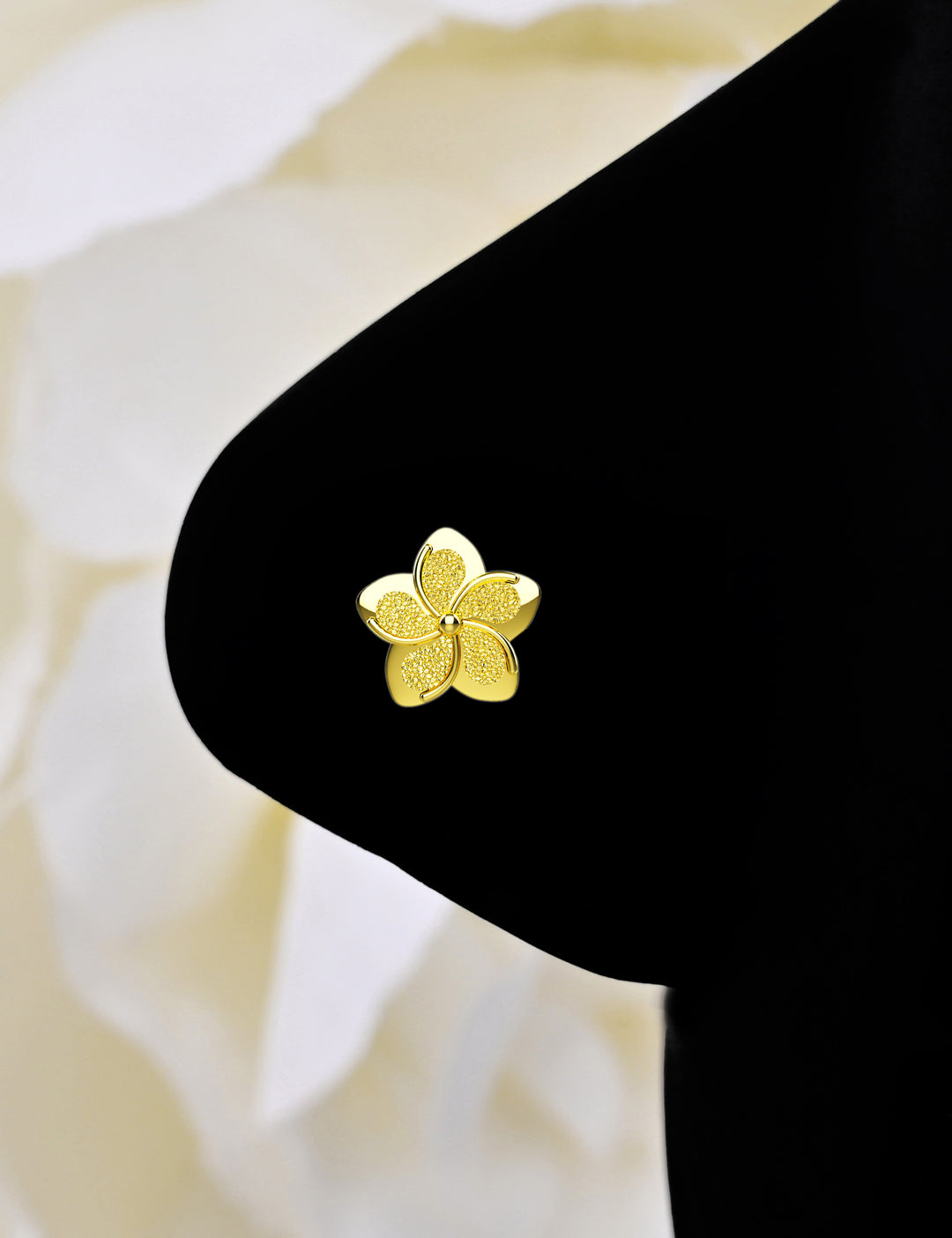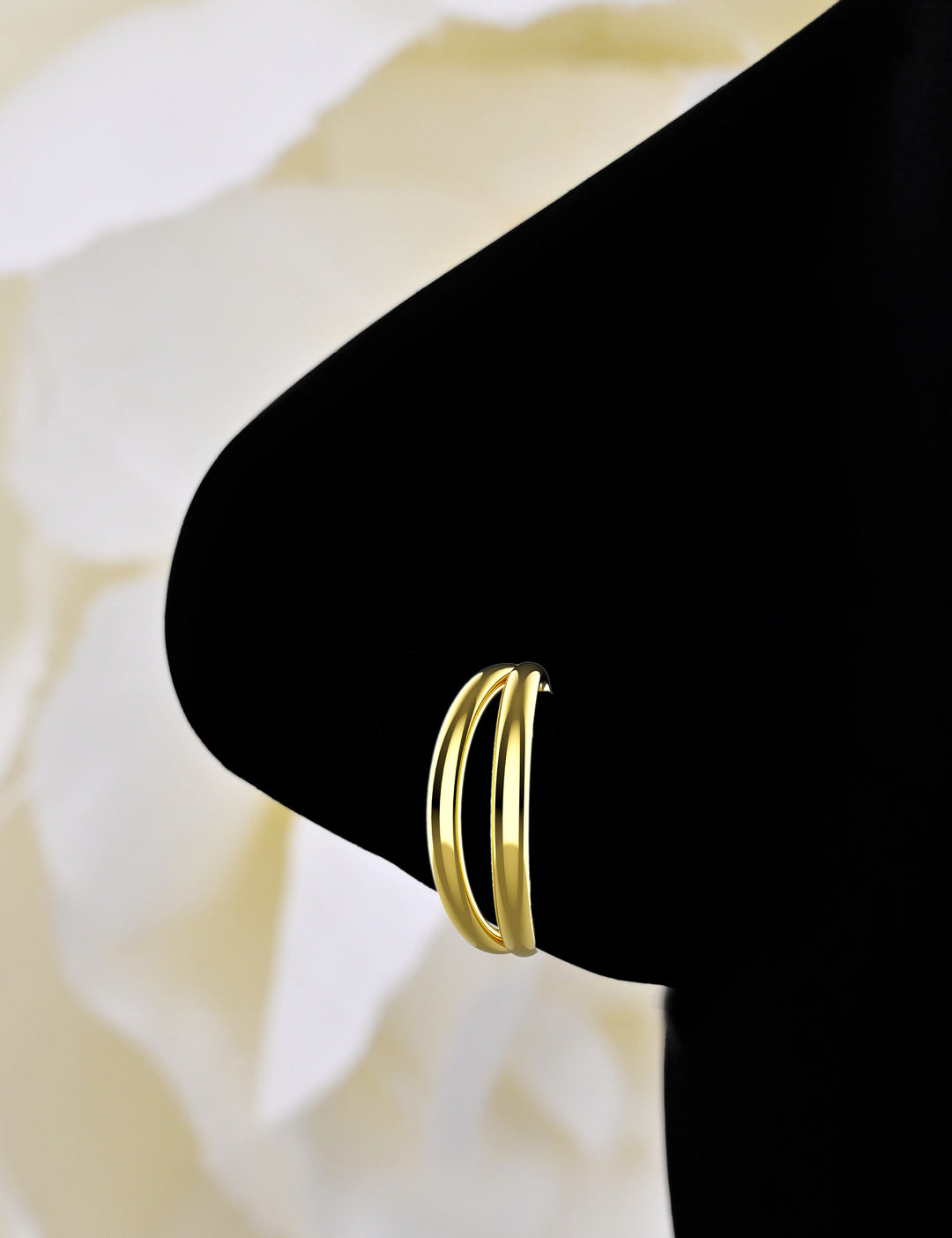The Cultural Significance of Body Jewelry: A Global Exploration
Body jewelry is a form of adornment that is worn on different parts of the body, including the ears, nose, lips, tongue, eyebrows, belly button, etc. It can be made of a variety of materials, such as metals, plastics, wood, bone, and precious stones, and can be decorated with different designs, colors, and symbols. Body jewelry has been used for thousands of years in different cultures around the world as a form of self-expression, identity, and status.
Body jewelry has deep cultural significance in many societies around the world. For example, in some African cultures, body jewelry is used to symbolize different stages of life, such as puberty or marriage, and to express social and economic status. In Asian cultures, body jewelry is often associated with religious and spiritual beliefs, such as the use of nose rings in Hinduism and Buddhism. In indigenous cultures, body jewelry is used to connect with ancestors, spirits, and the natural world, and to convey cultural identity and traditions. In Western cultures, body jewelry has become a mainstream fashion accessory, and is often used as a form of self-expression and individuality.
The purpose of this article is to provide a comprehensive exploration of the cultural significance of body jewelry across different cultures and time periods. By examining the different types of body jewelry used in various societies, we can gain a deeper understanding of the meanings and values associated with this form of adornment. The article will cover the history, symbolism, and design of body jewelry in African, Asian, indigenous, and Western cultures, as well as the different materials and techniques used to create it. The aim is to provide readers with a broad perspective on the importance and diversity of body jewelry as a cultural practice.
African cultures
Body jewelry has been used in African cultures for thousands of years, and has deep cultural and social significance. In some cultures, such as the Maasai in Kenya and Tanzania, body jewelry is used to indicate social status and wealth, with larger and more elaborate pieces being worn by wealthier individuals. In other cultures, such as the Yoruba in Nigeria, body jewelry is used to mark significant life events, such as coming of age or marriage. Body jewelry in Africa is often made from natural materials, such as animal bones, shells, and beads.
The symbolism of body jewelry in African cultures varies depending on the culture and the type of jewelry being worn. For example, in the Akan culture of Ghana, gold earrings are a symbol of wealth and social status. In the Yoruba culture, waist beads are worn by women to signify femininity and fertility. Nose rings are also a common form of body jewelry in many African cultures, and can have different meanings depending on the culture. In some cultures, they are worn by women to signify their status as married women, while in others they are worn as a symbol of beauty and femininity.
There are many different styles and designs of body jewelry in African cultures. Some examples include the beaded necklaces and bracelets worn by the Maasai, the waist beads worn by women in many West African cultures, and the intricate gold jewelry worn by the Akan people of Ghana. Other examples include the lip plates worn by some women in Ethiopia and the horn-shaped earplugs worn by the Mursi people of Ethiopia and South Sudan.
Asian cultures
Body jewelry has a long history in many Asian cultures, and is often associated with spiritual and religious beliefs. In Hinduism, for example, nose rings are worn by women as a symbol of respect for the goddess Parvati. In Buddhism, earrings are worn as a symbol of wisdom and compassion. Body jewelry in Asia is often made from gold, silver, or other precious metals, and is sometimes decorated with precious stones.
The symbolism of body jewelry in Asian cultures varies depending on the culture and the type of jewelry being worn. In some cultures, such as India, nose rings are worn by women to signify their marital status. In other cultures, such as China, earrings are worn as a symbol of wealth and social status. In some Buddhist cultures, tattoos are used as a form of body jewelry, and are thought to provide spiritual protection and guidance.
There are many different styles and designs of body jewelry in Asian cultures. Some examples include the nose rings worn by Indian women, the intricate gold jewelry worn by Balinese dancers, and the jade earrings worn by women in China. Other examples include the traditional tattoos worn by Buddhist monks in Thailand and the elaborate headdresses worn by tribal communities in parts of Southeast Asia.
Indigenous cultures
Indigenous cultures around the world have a long history of using body jewelry for a variety of purposes, including spiritual and cultural expression. In some cultures, such as the Haida people of the Pacific Northwest, body jewelry is used to signify tribal identity and connection to the land. In other cultures, such as the Maori of New Zealand, tattoos are used as a form of body jewelry and have deep spiritual significance.
The symbolism of body jewelry in indigenous cultures varies depending on the culture and the type of jewelry being worn. In some cultures, such as the Navajo people of the Southwest United States, turquoise jewelry is used for protection and healing. In other cultures, such as the Inuit of the Arctic, bone and ivory jewelry is used to represent animals and other elements of the natural world. Tattoos are also a common form of body jewelry in many indigenous cultures, and can represent a range of spiritual and cultural beliefs.
There are many different styles and designs of body jewelry in indigenous cultures. Some examples include the intricate beadwork of the Lakota people of the Great Plains, the bone and ivory jewelry of the Inuit, and the feather headdresses worn by many indigenous peoples in the Americas. Other examples include the tattoos of the Maori people of New Zealand and the traditional body piercings of the Kayan people of Myanmar.
Western cultures
Body jewelry has been used in Western cultures for centuries, but its cultural significance has varied widely over time. In ancient Rome, for example, earrings were worn by both men and women as a symbol of wealth and social status. In more recent history, body jewelry has been associated with countercultural movements, such as the punk and goth subcultures.
The symbolism of body jewelry in Western cultures varies depending on the culture and the type of jewelry being worn. In some cultures, such as the United States, tattoos are used as a form of self-expression and individualism. In other cultures, such as the United Kingdom, body piercings are often associated with rebellion and nonconformity. Some types of body jewelry, such as wedding rings, are worn as symbols of love and commitment.
There are many different styles and designs of body jewelry in Western cultures. Some examples include the simple stud earrings worn by many people in the United States, the septum piercings popular in the United Kingdom, and the elaborate tattoo sleeves of many Westerners. Other examples include the nose rings and tongue piercings worn by some individuals as a form of self-expression and the minimalist jewelry designs favored by some Westerners.
Conclusion:
Body jewelry has a rich history and cultural significance across the world. From Africa to Asia, indigenous cultures to Western cultures, body jewelry has been used for a variety of purposes, including spiritual expression, cultural identity, and personal adornment.
By exploring the different cultural significances of body jewelry across the world, we can gain a deeper appreciation for the diversity of human expression and the importance of body adornment in different cultures. Through this exploration, we can also gain a greater understanding of the symbolism and meaning behind different types of body jewelry, and how they reflect the beliefs and values of the cultures in which they are used.
Overall, body jewelry is a fascinating and complex aspect of human culture, and its continued use and evolution reflects the enduring importance of personal expression and cultural identity in our lives.







Leave a comment